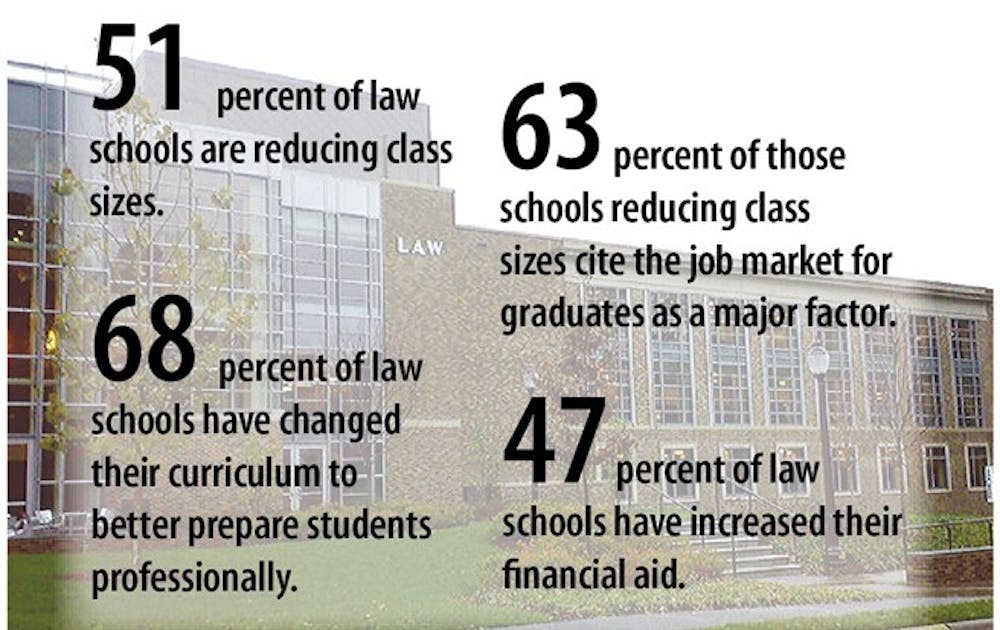In response to the current economic climate, many law schools are reducing their incoming class sizes, a recent survey shows.
The survey, conducted annually by Kaplan Test Prep, polled admissions officers from 123 American Bar Association-accredited law schools this year and found that 51 percent of them have been reducing their class sizes. Additionally, 63 percent of those surveyed cited the job market in the legal industry as an incentive for making cutbacks in enrollment.
“Historically speaking, the number of applicants is inversely proportional to how the economy performs,” said Jeff Thomas, director of pre-law programs for Kaplan. “Law schools are adapting the size of their class to reflect the shrinking number of applicants.”
Thomas explained that the promise of lucrative jobs following graduation from law school is not what it was six to seven years ago. With the large number of lawyers and law students, the job market for those with a law degree is becoming increasingly competitive. Students are carefully weighing their options when deciding whether or not to apply to law school.
“[Law schools] are trying to maintain the same high standards of admission by producing a solid class for whom there will be jobs available,” Thomas said. “They are adapting to provide new opportunities to ensure [students] will graduate more ready than ever.”
Ray Koh, a senior and law school applicant, said he feels confident about the job market by the time he graduates with a law degree.
“Law schools like Columbia have ridiculously high employment rates—it’s a good time for the job market,” Koh said. “The legal job market is recovering.”
Senior Derek Scott, also a law applicant, noted that he feels confident about his future job prospects despite fluctuations in the economy.
“No degree is ever a promise, but some schools have it better than others, which was something I really took into account,” Scott wrote in an email Sunday. “I selected ones that I knew I would be happy to attend, as well as ones that had a solid reputation for jobs.”
This year’s edition of the annual survey, Thomas noted, contained questions regarding entering class sizes for the first time in order to highlight the effects of the economy on law school applicants.
The survey also highlighted a positive consequence of having law schools reduce their class sizes. In response to the shrinking class sizes, law schools’ financial aid will increase for those who are accepted.
According to the survey, 47 percent of law schools have increased financial aid to students for the 2012-2013 cycle, while 41 percent claimed that the school has maintained their level of financial aid from previous years.
Adaptations based on the economy have also come in the form of curriculum changes. The majority of law schools polled in the survey have made alterations in order to make students more prepared for the job market.
“A number of schools—68 percent—have already changed their curriculum,” Thomas said. “Fourteen percent of the remaining schools have plans in the works to change.”
Thomas cited New York University Law School as an example of one of many schools changing the focus of their third year to include more practical applications, such as client representation and specialization in specific topics.
Acceptance rates, Thomas noted, will not be affected by the reduced size of law school classes, as law schools seek a consistent rate of those attending and those applying and do not intend to simply become more selective.
“We have seen little adjustment in acceptance rates,” Thomas said. “Law schools have no interest in lowering the threshold—they will be graduating fewer applicants with a high echelon.”
Get The Chronicle straight to your inbox
Signup for our weekly newsletter. Cancel at any time.

